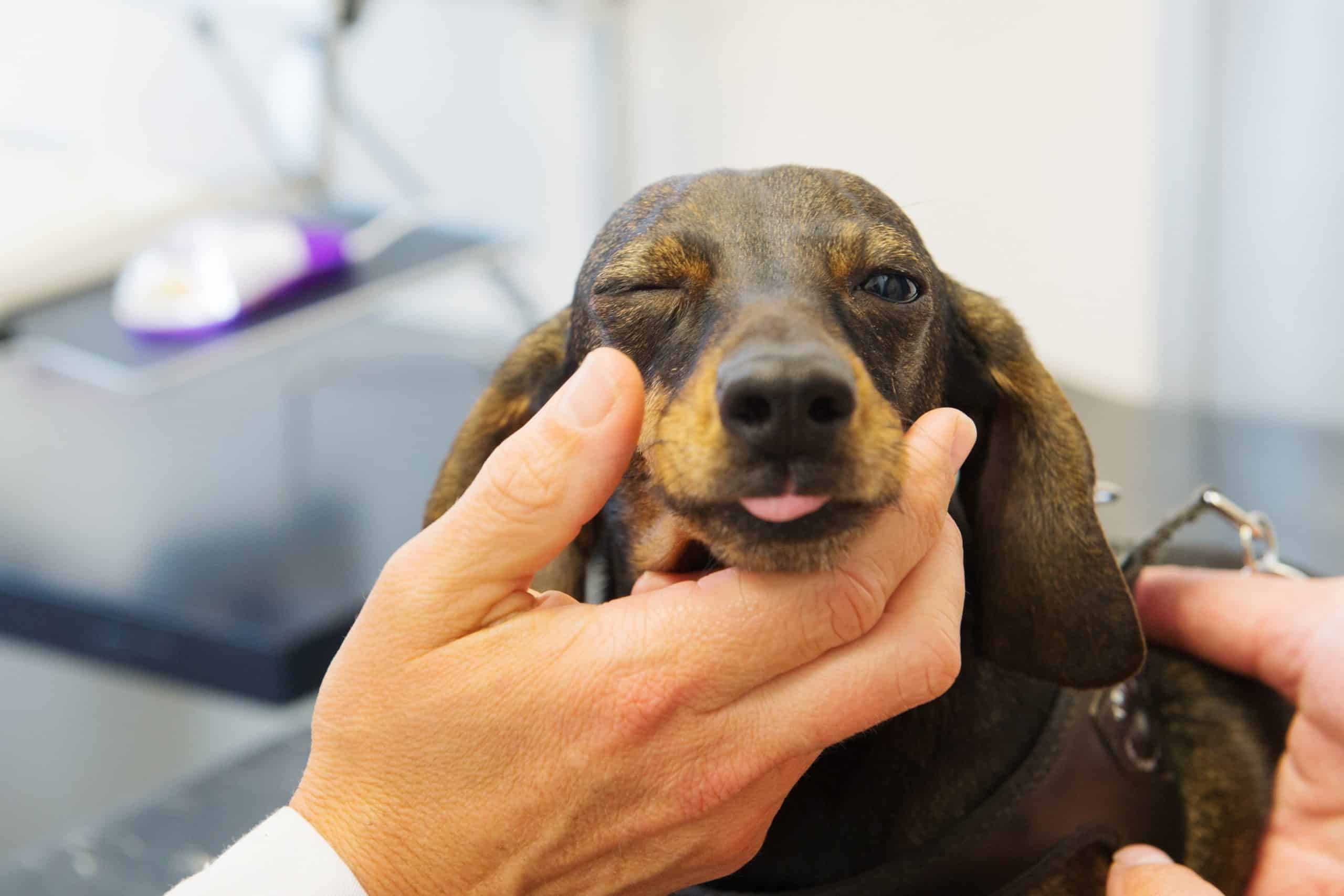
Having occasional tears is healthy when it comes to dogs. An uncontrolled flow of tears and water from the eyes can indicate canine epiphora, a serious underlying issue.
Similar to humans, dogs can also develop runny eyes (scientifically known as epiphora). If your furry pal is experiencing runny eyes, then you should take measures to treat it immediately.
Continue reading to learn more about canine epiphora.
What is canine epiphora?
Medically, canine epiphora refers to a condition wherein there’s a constant flow of tears in dogs. Although it is harmless for a few dog breeds, it may cause loss of vision in others. Thus, it is a condition that pet owners should not ignore. Once the owners observe their canine pal shedding tears constantly, they should report to the vet immediately for an unreasonably long span.
Fundamentally, it is a condition in which lacrimal glands produce tears constantly. Then these release into the eyes. As the eyes flash, the tears move from eyelid to carpal. The carpal is a loose connective tissue with either dilated blood vessels near the nose or tortured blood vessels. Consequently, excessive tearing will stress the eyes of your furry pal. It may also cause tear staining. However, tear staining, i.e., stains of tears, itself, is not much of a medical issue.
Also, there are two types of canine epiphora. These include:
- Active epiphora
- Passive epiphora
Active epiphora refers to the excessive production of tears. It usually occurs after inflammation or pain. Passive epiphora refers to the condition wherein the tears produced by the lacrimal glands slide into the nose. The tears accumulate at the eye base, and eventually, they overflow. Usually, it occurs after an infection, intrusion by a foreign body, or inflammatory stenosis.
Signs of epiphora in dogs

Fortunately, epiphora has plenty of noteworthy symptoms that allow you to identify and treat the dog quickly. Here is a collection of the commonly experienced symptoms of Epiphora:
- Staining under eyes and along with the nose
- Wetness and dampness around the eyes
- Rubbing of eyes and face
- Crust around eyes
- Swollen face and eyelids
- Excessive blinking/squinting
- Redness in eyes
- Pupil size changes
If your furry buddy is experiencing any of these symptoms, then you should seek medical assistance right away. Sometimes, dogs with epiphora exhibit neither of these signs or do so suddenly. In any case, take immediate action as severe epiphora can lead to sight loss too.
Causes of eye discharge in dogs
Now, let us have an in-depth look into what exactly can cause eye discharge in dogs. Usually, discharge from a dog’s eyes is the result of conjunctivitis. It refers to the inflammations in the lining of a dog’s eyes. Conjunctivitis itself may be a result of any of the following:
- Allergies
- Birth-defects
- Tumors
- Presence of foreign matter
- Dry eye
- Unreasonable temper issues
It can also mean a brain or nerve injury. In either case, looking into the matter immediately is a wise move. At times, the excessive growth of hair around the eye may also lead to runny eyes.
Diagnosis and cure
For diagnosis, you should take your dog to a certified veterinarian. We do not recommend diagnosing the dog yourself. It can be highly dangerous for both you and your dog.
Here are the stages of epiphora diagnosis that veterinarians follow usually:
Ruling it out
Besides epiphora, a dog can have numerous eye problems. Your vet will conduct several tests to confirm whether these symptoms are for epiphora or not. These include corneal stain test for ulcers, eye pressure test for glaucoma, and many others.
Eye exam
The veterinarian will conduct a magnified examination of both the eyes, tear ducts, eyelids, cornea, and other parts of an eye.
Dacryocystorhinography
Next, a liquid will get flushed in the entire tear duct system of the eyes. The liquid will be visible on the X-ray. It will tell all the blockages from the corner of the eye to the nose.
Schirmer tear test
The veterinarian will place a color-changing paper under the dog’s eyelid to check whether tear production is average, below average, or excessive.
Once the vet has diagnosed epiphora, he will recommend you the appropriate treatment required. Generally, the vet will give a medication to clean the stains and antibiotics to cure the infection. If the problem has reached severity, the vet will do surgery to repair tear ducts and remove blockages.
As for prevention, there is no way to prevent Ephiphora until it exhibits the symptoms. However, in treated dogs, you can prevent another epiphora issue by cleaning the dog’s eyes regularly.
Treat tear staining

As mentioned earlier, we firmly advise you to visit the vet as soon as you notice your dog shedding tears abnormally. However, if you think the issue is mild or do not have access to a professional vet, then fret not.
To address the issue, you can begin with cleaning your dog’s tear stains with milk of magnesia. It combines magnesia, hydrogen peroxide, and cornstarch paste. Or you can use plain hydrogen peroxide or a mixture of apple cider and white vinegar. Another option is to purchase a commercial tear stain remover. You can apply all of these in small quantities on the stained areas and rid of tear stains, liberating your dog from the pain of hardened fur.
Runny eyes can also be a result of unreasonable temper issues. If that’s what triggers canine epiphora in your furry friend, then you can try treating your dog with natural remedies like CBD oil for dogs. The latter has soothing properties, which bring a surge of energy and stability to your dog’s mood. If you do not wish to resort to medicinal solutions, then we suggest you take care of stress-causing factors in the environment, such as extreme temperature. Perhaps, you can regulate temperature by using ceiling fans or heaters. Or make the required changes in diet or schedules if that’s what triggers your furry friend.
To truly eradicate canine epiphora, you will need to trace down the actual cause. Since that may be difficult for you, we advise you to work with your vet or a specialist.
Shawn Mack is a content writer who offers ghostwriting, copy-writing, and blogging services. His educational background in the business and technical field has given him a broad base from which to approach many topics. He also is fond of writing interesting articles on technology and digital marketing related topics.
